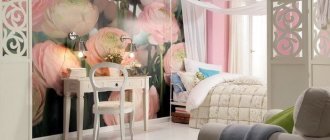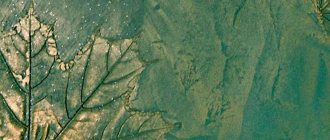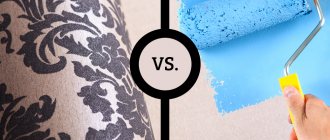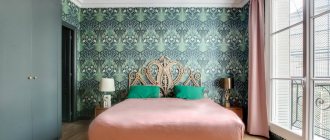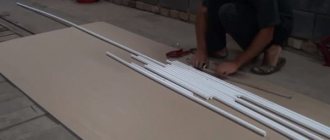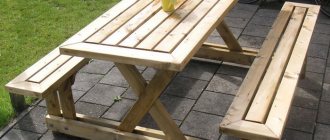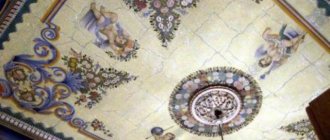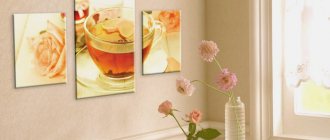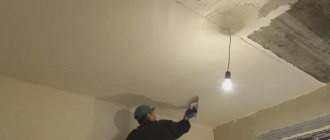From this article you will learn:
- Why paintable wallpaper is better than regular wallpaper
- For what types of wallpaper can wallpaper paint be used?
- What types of wallpaper paints are there for painting?
- How to choose wallpaper paint for painting
- How to determine paint consumption for wallpaper to be painted
- How to properly apply paint for wallpaper before painting
Repairs in Moscow need to be taken seriously. You need to understand exactly what the walls in the apartment should look like after renovation. Recently, many people prefer painting wallpaper as a finishing touch to walls. This is a great option for both home and office. To obtain an ideal result, not only the professionalism of the master is important, but also the competent choice of materials. Let's figure out together what paint to paint the wallpaper for painting, what are the subtleties of its application, so that the result meets expectations.
Why paintable wallpaper is better than regular wallpaper
Painting the ceiling and walls requires high-quality surface preparation, including leveling, puttying, and sanding, which not everyone can do. You can cover the walls with ready-made painted wallpaper, but mass production makes it far from original and does not always emphasize the overall style of the room. For those who want to create a unique interior in their favorite colors, painting wallpaper is ideal.
Long and painstaking preparation of the walls is no longer required; it is enough to simply cover the surface with wallpaper, and then paint it in any color of your choice. The absence of the need for putty, plaster and sanding significantly reduces the cost and simplifies the work. It takes less time to complete a task.
Advantages of wallpaper for painting:
- the ability to not only choose a color palette to your liking, but also create patterns, ornaments, designs, various stripes and other decorative elements. A wide palette of wallpaper colors for painting makes it easy to find the desired shade;
- Bored wallpaper does not need to be re-pasted, you can simply repaint it. There is no need for dismantling, there is no need to buy new materials, waste time and effort;
- a layer of paint protects the wallpaper, it is not afraid of moisture, various types of corrosion, solar radiation and wear. Unlike conventional wallpaper, the painted surface is wear-resistant and resistant to any influences, including mechanical ones;
- not all moisture-resistant finishing materials are capable, such as latex paint, of maintaining an optimal level of humidity in the room;
- a wide range of wallpaper paints for painting shades of any color cannot even be compared with the spectrum offered by manufacturers of ready-made wallpaper with a limited number of colors, patterns and designs;
- Wallpaper paint for painting allows you to hide surface defects in the form of unevenness, scratches, joints, seams, etc.
Preparing the walls
Not only freshly pasted wallpaper can be used for painting, but also old coatings that have adorned the walls for many years. Depending on this, the preliminary preparation of walls for painting differs.
New wallpaper for painting is glued in accordance with the instructions for installing non-woven coverings. It is very important that the walls are as smooth as possible and that the canvases do not overlap - this will spoil the appearance of the room and the repair will be of poor quality.
After gluing new wallpaper, you need to dry it thoroughly. This will take at least two days. Experts recommend gluing wallpaper at a room temperature of 20-25ºС.
Advice! Under no circumstances should windows and doors be opened; there should be no drafts in a room with wet surfaces.
As for old wallpaper, you cannot do without preliminary cleaning. No paint will lie evenly on a contaminated surface. Non-woven wallpaper can be vacuumed and wiped with a damp cloth, while vinyl on a cellulose backing can be washed with soapy water. This treatment will not only clean the surface, but also degrease it.
All baseboards, window sills, slopes and other decorative elements are sealed with masking tape. The floor must be covered with paper or film.
Paint for what types of wallpaper is used for painting
The construction market offers various types of wallpaper suitable for painting.
- Non-woven.
Wallpaper on a non-woven, smooth base with two viscose layers. The surface of the wallpaper is covered with foamed vinyl or pressed interlining in the form of a decorative pattern. The wallpaper adheres well and is suitable for finishing walls and ceilings. Due to its high elasticity, wallpaper does not react to wall shrinkage or the appearance of cracks, perfectly hiding minor surface imperfections. Non-woven fabric is highly resistant to moisture, which makes it possible, if necessary, to wipe the walls with a slightly wet sponge.
- Paper.
One of the cheapest versions of wallpaper for painting. Such wallpaper is impregnated with a special composition that increases water-repellent properties. The surface is embossed, similar to expensive fabric, textured plaster. Paper wallpapers are widely used.
- Glass wallpaper.
Ideal for rooms with high humidity. The wallpaper has a mineral base made of fiberglass, which allows you to maintain the original relief and decorative effect even after repeated painting. Unlike single-layer domestic options, imported glass wallpapers have a backing. They are used for finishing walls in residential, office and utility rooms. Fiberglass fabric is characterized by enhanced fire resistance.
When choosing wallpaper for painting, you should focus on the purpose of the room. For example, for bedroom walls with low intensity of use, paintable wallpaper with a paper base is perfect. Non-woven wallpaper with a foam surface will perfectly decorate the hallway and living room, as they are more wear-resistant. The best choice of wallpaper for the kitchen and children's room would be glass wallpaper, which can easily withstand frequent updates.
How to paint wallpaper
After all the preparations, you can start painting:
- The paint is mixed in a jar until smooth and poured into a plastic tray.
- Roll the roller in the paint until it is well saturated with it. The excess is squeezed out onto the grooved part of the tray.
- Start work from the top corner of one of the walls. Roll the roller along the wall from bottom to top.
- The next strip is applied with a slight overlap. Gaps are unlikely to be avoided, especially if the paint is light.
- It is better to paint near the baseboard and ceiling with a brush.
- After the first layer has dried, apply the second, covering all gaps and eliminating possible defects.
- After a few hours, you can bring furniture into the room and use it. But it will take up to three weeks for the paint to dry completely. During this period, it is better not to lean against the wall and not to wipe the wallpaper.
The entire painting process is shown in the video:
Advice! Any paint becomes a little lighter after drying.
To ensure the authenticity of the shade, it is better to test the dye in advance on an inconspicuous area of the wall, for example, behind a cabinet.
What paint is used to paint wallpaper for painting?
Let's look in more detail at what paint to use to paint the wallpaper, because there are several types of it.
Alkyd paint
It is recommended to use alkyd wallpaper paints for painting for finishing walls and ceilings in non-residential and utility rooms. This is explained by the content of various oils and resins that have a detrimental effect on human health. This threatens not only poor health, but also the possibility of developing dangerous diseases, especially of the respiratory tract.
But alkyd paints have undeniable advantages. First of all, this is the high durability of these paints. They are moisture resistant and do not change color when exposed to the sun and light. Antifungal components added to such paints prevent rotting of the painted wallpaper. Alkyd paints are more saturated with color pigments, so they look brighter.
Wallpaper painted with alkyd paint will last at least five to six years. Over time, their appearance deteriorates a little. Alkyd paints are classified as fire hazardous substances, which also limits the scope of their possible use.
Water-dispersion paint
Currently, this is one of the most famous types of wallpaper paint for painting. This paint does not contain any harmful substances, oils or resins. This makes it as safe as possible for humans and suitable for painting wallpaper in apartments, houses and office spaces. A variety of colors adds advantages to the paint and makes it possible to choose the desired shade for the chosen interior of the room to enhance its uniqueness.
Water-dispersion paint is available in several types on the paint and varnish market. One of the varieties is latex paint, which has a water-dispersion acrylic base, intended for painting embossed wallpaper with a non-woven base and fiberglass. Quick-drying paint with virtually no odor. Perfect for painting wallpaper in the kitchen, nursery, bedroom, living room and other residential and office spaces. High air humidity in the bathroom makes the use of this paint impractical.
Acrylic paint
The absolute harmlessness of acrylic paint has made it very popular in many types of painting work. An excellent choice for painting wallpaper in residential areas, including children's rooms. The harmless composition, absence of chemicals and other harmful components make the paint safe for health and increase its popularity. Due to its visible advantages, this paint is one of the most expensive options for finishing paints and varnishes.
Professionals consider the best use of acrylic paint to be painting wallpaper with a non-woven base, although it is suitable for both glass wallpaper and wallpaper with a paper base. Due to the increased saturation, it is permissible to use acrylic paint for preliminary priming of surfaces. Wallpaper painted with this paint looks bright, does not lose its color for a long time and does not require re-painting for a long period of time.
The paint is completely odorless. When painting, no film is formed, which allows the walls to “breathe.” One of the most important advantages of this paint is its drying time - within one day.
Recommended articles on this topic:
- Arrangement of a small apartment
- Stages of renovation in an apartment
- Turnkey cosmetic repairs
Water-based paint
Water-based paints contain latex (acrylate), an antiseptic, bonding chemicals, and filler. Acrylic, water-dispersion and water-emulsion paints are considered as environmentally friendly and ideal finishing materials used for painting residential premises and office buildings. The paint has no smell.
The increased moisture resistance of water-based paint makes it possible to wash surfaces painted with water.
Wallpaper paint colors: what palette to use
Having found out which paint is best for wallpaper, let's figure out what colors of wallpaper paint are most often used when decorating the interior of a room. Here are the main differences:
- Water-based paints have a very rich palette of colors and smallest shades.
- As for water-dispersion paints, they are usually white.
It may seem reasonable to ask a question that any person who is thinking of carrying out renovations in an apartment or in a separate room has the right to ask: what is the point of choosing white when there is such a rich palette of colors? We answer: paint tinting is used for similar purposes. In other words, before painting the wallpaper, a certain color is added to the coloring composition.
Paint tinting
When creating a color scheme, you can mix different colors, choosing the tone necessary for your interior. You can create pearlescent, golden, bronze and any other shade you like. In special departments of stores that sell paint and varnish products, experienced specialists will select exactly what you need.
Related article: Which glue to choose for textile wallpaper
It is for this reason that it is not recommended to tint such paints yourself. If you do not have the necessary experience in carrying out such work, we advise you to contact specialists. This is exactly what most reviews say from those who, without proper qualifications, risked doing the tinting with their own hands.
Helpful information! One of the most modern and high-tech methods is to create colors using a computer. So, if you have some remaining paint, but the painting has not been completed and you still need a certain amount of coloring composition, then a specialist will select the required color with perfect accuracy using computer tinting. With the help of a special tinting machine, store employees will quickly and efficiently help you tint exactly the color you ask for, and its match will be perfect.
Wallpaper paint for painting: colors and methods of reflection
Based on the degree of light reflection, all wallpaper paints for painting are divided into categories:
- glossy - paint that has a characteristic sheen, creating additional reflection of light rays, ideal for northern rooms and not recommended for brightly lit southern rooms;
- semi-gloss - a paint that is ideal for all living spaces, easy to clean, and has optimal light reflection. As a disadvantage, it can be noted that all irregularities are emphasized, so it is preferable to use it for smooth walls;
- matte - light-absorbing paint used in large rooms;
- semi-matte - paint with a slight sheen, perfect for bedrooms or living rooms;
- satin - paint that has a high degree of light reflection and a specific smooth base. This paint is perfect for the kitchen and bathroom, where wet cleaning is often used, but is not the best option for rooms with artificial lighting.
Types of non-woven wallpaper
Construction stores offer a wide range of wall coverings. The types differ not only in price, but also in their set of characteristics. If you choose the right material, you can easily transform the room.
Textured
Wallpaper with a relief surface looks original. A two-layer finish does not have to be painted in bright colors. Pleasant roughness shows better qualities in neutral shades or “native” colors.
For options with complex patterns, you have to select connecting lines. Thick trellises will protect against cold walls, which is why they are often used in bedrooms. Products with “breathable” properties are safe for children and allergy sufferers.
Smooth paper wallpaper.
The inexpensive finishing material does not contain harmful components, so professionals recommend gluing it in the nursery. The lack of paper component is compensated for by special protective impregnation. The more layers a material has, the less dangerous contamination and friction are.
Smooth paper wallpaper with a non-woven backing does not cover defects on the walls, so you will have to carefully treat the surface.
Cellulose gets wet with constant humidity in the bathroom and leaves marks from regular damage. Finishes based on wood chips are used in living room interior design.
Smooth wallpaper
Single-layer trellises are made from environmentally friendly raw materials and come in plain colors or with patterns. The material perfectly absorbs tint products, dries quickly and does not deform when exposed to moisture. Painted walls look expensive and impressive.
You can get both a bright glossy shine and a delicate velvety surface. Easy to maintain and install, suitable for beginners to carry out DIY repairs.
Anti-vandal
Durable wallpaper with increased resistance to wear and mechanical stress is expensive. The view is suitable for housing with pets and small children.
Anti-vandal coating will protect against stains and food particles in the kitchen. The protective layer is not applied on top of the finish, but is introduced into the composition of the raw material.
The best wallpaper paint for painting: selection criteria
- Covering power, or hiding power.
It is the main indicator of the quality of paintwork materials, determining the number of layers required to uniformly cover the surface with color, and paint consumption. Depending on the intensity of coloring, there are 4 classes of hiding power. Manufacturers indicate the class of their products on the label. Preference should be given to products with opacity classes 1 and 2. It is this paint that can turn a completely black wall white in just two layers. Wallpaper paint for painting with low covering power can spoil or completely paint over the texture of the wallpaper.
- Abrasion resistance.
The parameter value is also written on the label. Based on the degree of abrasion resistance, wallpaper paint for painting is divided into five classes. Classes 1 and 2 are perfect for cleaning and guarantee a long service life of the surface. It is advisable to use such paints in the bathroom, hallway, kitchen, nursery, etc.
- Whiteness level.
Manufacturers of expensive wallpaper paints for painting use high-quality pigments as components, ensuring impeccable whiteness. In budget paint options, these components are almost completely replaced with fillers, which give a dull and unsaturated color.
- Price.
The cost of paint directly depends on the quality of the binder polymer used. High quality raw materials are produced by only a few concerns, so the price is quite high. Some companies raise the price due to the brand, others position the paint as professional. There are companies that target the mass consumer and keep average prices.
Wallpaper painting
The work is carried out in several stages.
Stage 1. Test
The shade of fresh paint is slightly different from what it will be when dry. To be sure of a positive result, you need to make a brush stroke on a small area of the wallpaper. Wait until completely dry and, if necessary, adjust the color.
Stage 2. Working with a brush
The corners, the area under the ceiling, as well as along the baseboard should be carefully painted with a brush. This must be done, since it will be difficult to paint these areas with a roller.
Stage 3. Roller
Pour paint into the reservoir and carefully dip the roller into it. Next, the roller should be squeezed out in a special tray to remove excess paint. Roll the wallpaper, carefully monitoring the pressure on the surface. The surface relief should be well painted, but not deformed. If the wallpaper has areas with deep embossing, they need to be worked on with a brush.
To obtain a uniform, rich color, the wallpaper should be rolled in two layers.
Instead of a roller, you can use a special spray gun, having previously adjusted the intensity of the paint supply.
Stage 4. Finishing
This stage is used for additional decoration of walls. For example, paintable non-woven wallpaper from the Marburg brand from the Patent Dekor 3D collection contains quartz particles in its structure. This allows the canvases to look elegant without additional processing of the relief.
If there is a need to emphasize the beauty of the design, you can additionally work on the canvas with a dry brush or sponge. To create the desired accents, mother-of-pearl or paints of other shades are used.
There is no more affordable way to change the design of a room than by repainting the walls. Firstly, it’s very simple - everyone can hold a roller and brush in their hands. Secondly, it does not require large financial investments - you only have to spend money on a can of paint. Thirdly, you can update the interior in one day - the paint dries quickly, and the whole job won’t take even a couple of hours.
How to determine paint consumption for wallpaper to be painted
Pre-planning will help save time and effort. Calculate in advance what and in what quantities you may need. To calculate the required amount of wallpaper paint for painting, you need to know the area of the room to be painted, excluding windows, doorways, arches, etc. Any paint package should indicate its approximate consumption, which is determined by the type and density of the dyes.
Practice shows that to apply one layer per 1 sq.m. you will need 150-180 grams of paint. Two-layer painting requires 250 grams of paint per 1 sq.m. Rough surfaces (glass wallpaper) require less paint than wallpaper with a smooth surface (paper).
Main characteristics of water-dispersion paints
The paint is based on a certain type of polymer. To choose the optimal dye, you need to know its composition, characteristics and scope of application.
- A regular water-based emulsion is the simplest and cheapest option. But for rooms with high humidity, water-based paint should not be used, since it has low moisture resistance.
- Acrylic is a type of latex. The main substance of this dye is acrylic resins. Water-dispersion coatings based on acrylic composites are the most resistant to dry abrasion. After drying, the composition forms a reliable coating, the surface of which can be washed with a damp sponge. Colors retain their original brightness throughout use. But for rooms with high humidity it is better not to use acrylic paint.
- Acrylic-latex (with the addition of butadiene styrene) has a wide range of applications due to its low degree of vapor permeability. Can be applied to wallpaper in damp areas. Its cost is quite high.
- Latex (butadiene styrene) paint is highly resistant to moisture and mechanical damage. But at the same time it is quite sensitive to ultraviolet radiation. It is advisable to use it for painting rooms with high humidity that require regular washing of walls, for example, kitchens and bathrooms.
Advice
The optimal paint for non-woven wallpaper is acrylic. But it can only be used in living rooms with normal humidity. For bathrooms and kitchens, it is more advisable to use latex dyes.
In addition, interior paints come in shiny and matte finishes. When choosing, you need to decide on this criterion.
Interior paint can be of several types.
- Glossy. Suitable for dimly lit rooms. May cause discomfort in well-lit rooms. Has the property of highlighting surface defects. Rarely used in residential premises.
- Semi-gloss. Thanks to its reflective properties, it makes the room brighter. It is good to paint wallpaper in children's rooms and kitchens.
- Semi-matte. Looks good on bedroom walls. Thanks to its gloss, it smooths out small defects.
- Matte. Masks minor surface irregularities. Suitable for large rooms.
- Satin. Abrasion resistant, durable. Gives a nice smooth finish.
How to properly apply paint for wallpaper before painting
Before you start painting the wallpaper, make sure that the wallpaper glue is completely dry. The surface must be dry, clean and free of grease. If all these conditions are met, then you can start working:
- Apply masking tape to parts not to be painted (plinth, ceiling, borders of different colors).
- Pour the paint into a special container (cuvette), in which you can roll it out with a roller.
- Completely saturate the roller with paint and remove excess by rolling the roller along the ribbed surface of the container.
- Controlling the pressure (for uniform color intensity), paint the walls with a roller from top to bottom.
- It is more convenient to paint hard-to-reach places (corners, near the ceiling and baseboard, etc.) using a brush.
To emphasize the structure of the wallpaper, it is better to use a smooth roller that paints only convex details and patterns. The quality of painting tools requires special attention. The brush should be strong with hairs that are difficult to pull out, the roller parts should be durable, etc.
Paint colors for wallpaper for painting are selected in accordance with the overall interior of the room.
Cooperating with is reliable and prestigious. The specialists working here are professionals of the highest level. operates throughout Moscow and the Moscow region.
Preparing the surface for painting
You can paint pasted wallpaper only when the glue is completely dry. Otherwise, the canvases may peel off from the walls, and the repair will have to start all over again.
If you want to update old wallpaper and give the room a fresh look, all walls need to be vacuumed. It is also necessary to carefully glue all the joints, check whether the wallpaper has come away from the walls in the corners, if necessary, trim the covering and glue it.
Using film and masking tape, you should isolate adjacent objects and surfaces that cannot be painted. It is better to spend a little time on this procedure than to later wash the paint off the ceiling or baseboards.
Features of painting different bases
Working with different base materials has its own nuances. Below we will talk about painting non-woven, paper and vinyl wallpaper.
This material is glued to the wall with the bottom smooth side. The embossed side of the roll must be painted. For non-woven fabrics that will need to be cleaned from dust or dirt in the future, it is recommended to use only latex paint.
Non-woven surfaces are painted in a couple of layers with a fur roller. Do not overdo it with paint on non-woven fabric. In hard-to-reach places you can use a paint brush. The non-woven base can be painted on both sides. To emphasize the depth of color, it is recommended to use white putty.
Paper wallpaper
Two-layer impregnated paper-based wallpaper is the cheapest option for a base for painting. Paper reacts poorly to water, so not just any paint, but only water-based paint, is suitable for processing such material.
To prevent the paper from spreading, it is recommended to apply only one layer of paint and varnish. Two layers are also possible, but only when the first layer is specifically applied with bald spots. It is not recommended to leave excess glue on a paper base, since then it will protrude along the seams, which will reduce the quality of the work done.
Glass wallpaper
Fiberglass wallpaper is considered the best material for painting. Fiberglass is produced on the basis of quartz sand. The texture can be very diverse, including “herringbone”, “web”, etc. Fiberglass wallpaper is a very wear-resistant material that can be repainted up to 20 times. The peculiarity of fiberglass is that it does not absorb paint, but allows it to penetrate deeply between the fibers of the material.
Note! You need to work with fiberglass in the same way as with glass wool - wearing protective gloves.
It is best to paint fiberglass-based wallpaper with acrylic paint. The paint and varnish material is applied to the primed base in two layers.
Vinyl wallpaper is made on the basis of paper or non-woven material, so when choosing paint it is recommended to take into account the requirements for the relevant materials. The paint and varnish composition is applied in two layers using a long-haired roller and brush. The first layer is the main one, the second is decorative. Just as with a pure paper base, it is important not to saturate the material too much so as not to ruin it.
Paint consumption
The consumption of paint and varnish material is calculated taking into account the following indicators:
- total area of the treated surface;
- standard paint consumption per square meter;
- absorbent characteristics of the base.
Surface area refers to the total indicator of all perimeters and the area of the ceiling (if it will be painted). The perimeter is the length times the width. From the result obtained, you need to subtract the area of windows and doors.
However, before painting the wallpaper for painting, you need to provide a small excess of paint, since it is almost never possible to make an absolutely accurate calculation.
The paint consumption rate per square meter is indicated by the manufacturer on the packaging. Different manufacturers may have different consumption rates for the same types of paint. The reason for the differences is the different density of paint. If we talk about the standard case, then the consumption of the composition should not exceed 180 grams per square meter for a single-layer coating and 250 grams for a two-layer coating.
Different types of materials absorb dyes differently. For example, painting non-woven fabric and paper will require much more paint than fiberglass or vinyl backing.
Conclusion
In fact, the most important factor is the choice of a high-quality composition; painting work will not cause difficulties if carried out carefully and slowly. The video in this article will clearly show some of the features of the process.
Non-woven wallpaper is a material that can be repeatedly painted during use. However, in order for their texture to retain its original appearance, the paint for non-woven wallpaper must be chosen correctly.
There are special plain non-woven wallpapers that can be painted. In addition, you can paint regular wallpaper with non-woven or vinyl coating. Such canvases must be firmly glued to the wall with a special type of adhesive, otherwise they will not withstand the weight and will slide off.
Before you approach the walls, you need to make sure that the coating will adhere well. To do this, take a piece of wallpaper left after the renovation and apply dye to it. You can try it on a small section of the wall, usually covered by furniture. This will make it possible to evaluate how the paint will lay down and what appearance the coating will have.
How to paint non-woven wallpaper, coloring technology
After choosing a paint, you should figure out how to paint non-woven wallpaper. It all starts with preparation. First, all furniture and other objects that may interfere with the process are removed from the room. The walls must be clean and dry. Window and door openings are covered with masking tape. Only after this can you proceed to the next stage of the process of painting non-woven wallpaper.
First, all furniture and other objects that may interfere with the process are removed from the room.
Step-by-step instruction
First, you should paint a small section of the wall and wait for it to dry. If you are satisfied with the result, you can process the rest of the visit. The process consists of the following nuances:
- The roller is lowered into a container of paint and lightly squeezed. The composition is applied to the front side of the wall using vertical movements. You should move from top to bottom. The roller is pressed onto the surface easily, evenly distributing the composition.
- For hard-to-reach places, use a brush. A foam sponge will also work.
- After painting the entire surface, several more layers are applied. From two to three depending on the desired saturation.
- If you need to paint non-woven fabric with different paints, first apply one composition, wait for it to dry and apply another.
- Translucent wallpaper can be painted from the inside. Before pasting, the canvas is treated with paint. They cover the walls. The color will be more saturated, and the non-woven fabric absorbs the coloring composition well.
If after a while you need to repaint the walls, the new composition can be applied to the old one. First apply white paint to a dark canvas, and then apply the desired shade if you plan to change the wall palette to light.
If you need to paint non-woven fabric with different paints, first apply one composition, wait for it to dry and apply another.
How to choose the right roller
The final result depends on the quality of the roller. To choose the right product, you need to consider the following characteristics:
- Ability to absorb paint well;
- High-quality extraction of the composition. Nothing should drip;
- Soft, clean surface. Then the composition will apply evenly.
You should choose rollers with short pile, consisting of artificial fur.
You should choose rollers with short pile, consisting of artificial fur.
Is it necessary to prime at all?
Primer is required only at the stage of wallpapering. When it comes to coloring them, opinions differ. When priming, the paint will lay down in a more even layer. No bubbles or stains will appear. And if the goal is an ideal surface, then it’s worth using a primer. In other situations, you can refuse it. The surface of such wallpaper is quite dense, so it will not absorb the composition so much as to leave stains.
Primer is required only at the stage of wallpapering.
Features of choosing the composition and working with it
After you have purchased non-woven wallpaper for painting, you need to buy paint. There are quite a few types, the main thing to remember is one important point: a water-based option is suitable. The presence of organic solvents in paint can ruin the wallpaper, so you should never use them.
What paints are suitable for the job?
Let's consider how to paint non-woven wallpaper for painting:
- The simplest and most budget option is regular water-based paint . This group of products is quite easy to work with, the compositions are ready to work and can be used to cover walls. But there is one big point: the surface is poorly resistant to moisture, so it cannot be used in damp rooms.
- Water-dispersion solutions based on acrylic composites are a more reliable option; after drying, this composition forms a durable polymer film that is resistant to abrasion . In addition, the surface can be cleaned with a damp cloth, which allows the walls to maintain their bright color throughout the entire period of use. But it is worth noting that this option is not suitable for rooms with high humidity.
Acrylic paints are one of the most popular options among buyers.
- Latex compounds are most often used for rooms with high humidity: kitchens, bathrooms, and so on . Such paints will reliably protect your wallpaper from moisture and make it resistant to damage and abrasion. Another important advantage is that the surface can be washed using non-aggressive detergents thousands of times without the risk of damage; this factor is especially valuable if the walls often get dirty and require constant washing.
Latex composites provide high wear resistance
- Another interesting group of paints are silicone-based solutions . This option is characterized by the highest performance properties and resistance to almost all adverse factors, so it is often used for outdoor work. The price of products in this group is high, but the quality is excellent: excellent vapor permeability, moisture-repellent properties and resistance to mold and mildew.
This type of product is the most reliable to date.
Advice! When choosing one option or another, you should first consider the purpose of the room. In living rooms, it is best to use acrylic compositions, and in kitchens, latex paints are best suited.
Painting features
As noted above, painting non-woven wallpaper with your own hands is within the capabilities of anyone.
In this case, you should follow a few simple recommendations:
- To carry out the work, you can use a brush, roller or spray gun - whichever is more convenient for you.
Most often, a short-nap roller is used for work.
- The paint is usually ready to use, sometimes you may need to add a small amount of water (the instructions on the package will tell you the proportions).
- It is important to begin work after the wallpaper paste has completely dried. It should take at least a day, and if the temperature is low, then two.
Advice! You can use the original coloring option: even before gluing, cover the back side of the wallpaper. They are glued to the walls after the paint has dried; this method allows you to give the non-woven base a certain color, while the foamed vinyl on top will remain white, and its structure will stand out especially clearly.
- To make the coating more reliable, it is best to paint in two layers. The second one is applied only after the first one has completely dried.
- You can achieve an interesting effect if you use compositions of different shades for the first and second layers, the second is applied slightly carelessly so that the original shade shows through and gives the surface an original look.
The darker base and light top layer highlight the structure of the wallpaper especially clearly
Basic properties of paint for washable wallpaper
Water-based paints include thickeners and latex resin. Due to its simplicity, this paint is in demand among designers and professional builders. The paint is universal and practical.
It is precisely because of its properties that this paint is often used indoors.
Water-based paints are excellent for washable wallpaper
Because:
- It has no characteristic odors;
- Dries quickly;
- Easy to apply;
- Applies evenly;
- Perfectly permeates the wallpaper layer.
Washable latex wallpaper paint is used for finishing all types of wallpaper. But the best option is to apply it to non-woven fabric or vinyl embossing.
How to paint paper wallpaper?
It is very important to choose the right paint. The first rule that should be followed is that it should be for interior decoration, and not for facades.
Important! You should not use oil paints for a room - of course, once the rooms were decorated exclusively with them, but simply because there were no others.
Waterproof or vinyl acrylic paint
These types of paintings, due to their strength and durability, are recommended for painting rooms in the home, such as the kitchen or bathroom, where there are fumes and moisture that will deteriorate the painting. Remove traces of acrylic paint. To do this, you must use the type of solvent specified by the product manufacturer.
Basic Tools You'll Need
Dryer Bucket: Plastic paint must be thinned with water before application. Make sure you have at least the same width as the rollers you are going to use for compression. Roller: For water-based paints and plaster walls, it is best to use synthetic or natural wool. Buy short hair if the wall is smooth and long, if it is very irregular or has a golden tint. Of course, for roofs you will need a roller extension. Brushes: Brushes are essential for painting the area that borders the ceiling and baseboards, as well as the outlines of windows and corners. To make this easier, buy brushes in three sizes: 100mm, 40mm and 25mm. One of the brushes should end with a tip to use it in the corners of the walls. They give better results, although natural brushes made with pig hair are more expensive. Synthetic brushes free up any bristles that remain stuck in the wall. The tape should be paper that fits better and is easy to remove. Of course, it must be removed before the paint is dried to prevent it from coming off. Cardboard boxes: Newsprint is not enough to protect the soil; it will eventually stain.
Prepare the walls before painting
They also sell textured rollers for decorative finishing. . First of all, you must prepare the walls for painting.
Surface quality
Now you can see paints on the shelves that give different types of surfaces:
- glossy;
- semi-gloss;
- satin;
- matte;
- semi-matte.
Important! Which option to choose depends on the purpose of the room, lighting and size:
- For a large living room or bedroom with large windows, matte walls are more suitable.
- It is better to paint a small kitchen with glossy paint - it will appear larger and lighter.
Everything will depend on the state of wear of the walls. You should clean the walls to remove dust with a damp cloth and then with a dry cloth.
- If the current paint is in good condition, this will be very easy for you.
- And you are ready for the first coat of paint.
- If the walls deteriorate.
If the walls have stains or scuffs, it would be a good idea to apply very fine sandpaper to them so that the paint will better cover the stains or even the surface, as the case may be.
If the walls are chipped: If painting from previous years lifts easily or has chips or wrinkles, remove it with a putty knife and unify the surface with fine sandpaper. Remove any loose dust, then to help the paint adhere better to the wall, brush the area with a light base coat of paint. Let it dry for at least 1 hour and you can start painting.
Performance characteristics
When choosing a finishing material to paint old wallpaper, you need to focus on its other qualities:
- Light resistance. If the paint fades badly, you will have to make new repairs pretty soon. So try to choose one that does not change color too quickly when exposed to sunlight.
- Resistance to mechanical stress. The less sensitive the coating is to mechanical stress, the better. In principle, all interior paints provide a durable surface that is quite difficult to scratch, but still do not forget to clarify this issue with a consultant.
- Transparency. Pay special attention to such characteristics as transparency. The paint that is already covering the walls should not show through the new layer, otherwise you risk getting walls that are not the shade you want.
- Environmental friendliness. Finishing materials used to decorate the interiors of apartments or houses should not emit harmful substances. It is desirable that they do not react with the environment at all.
- Moisture resistance. Resistance to moisture is important so that surfaces can be washed without serious consequences.
- Drying time. The time it takes for it to dry completely determines how quickly you can make the repair.
